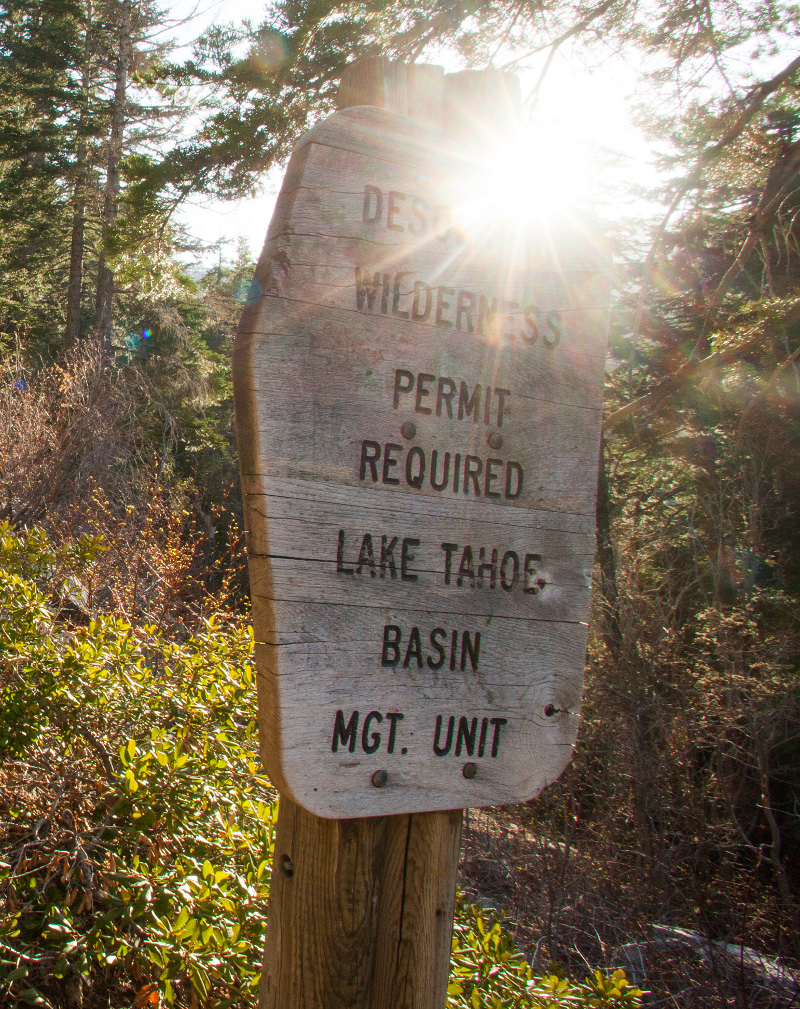Dean Fleming was born and raised in Sonora, CA, the gateway to Yosemite Valley. Once the youngest certified professional climbing guide in the country, he eventually combined his love of writing, photography, earth science, and rock climbing into a career of sharing his stoke and expertise through publishing. Dean is the author of the Columbia Bouldering Guidebook and the founder and editor of California Climber Magazine. In this series, he’ll be sharing a taste of some lesser-known, high-quality climbing areas in our favorite state, plus how to take care of these special places for years to come.
Words and images by Dean Fleming. Originally published in the Fall 2018 issue of CA Climber.
In July 2012, local Lake Tahoe area boulderer and route developer Brad Perry was scanning frames on Google Earth when he noticed what appeared to be a talus field above the 90-Foot Wall—a popular top-roping cliff along the Eagle Lake Trail in Tahoe’s Desolation Wilderness. “I was just browsing around 90-Foot Wall and I found some talus that looked good,” said Perry. “So I called David Outcalt and asked him if he wanted to go try to find some rocks.”
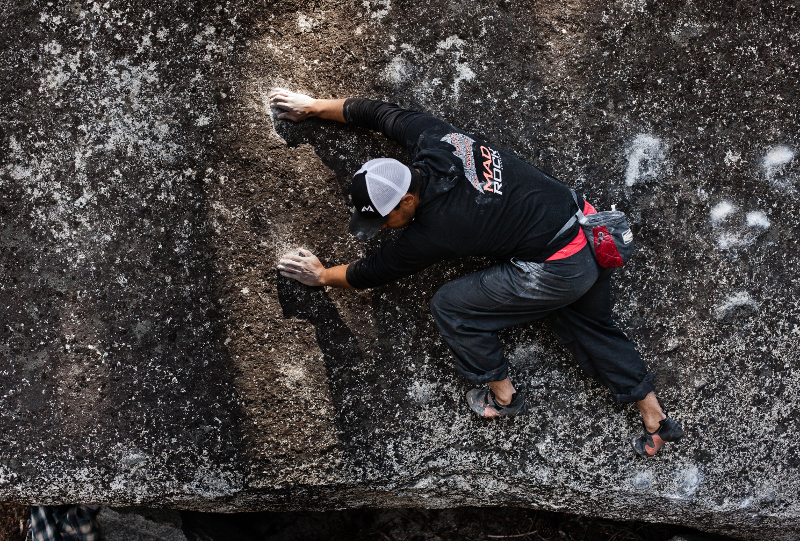
“The first time we found the boulders we came in from above the talus field,” Perry continued. “We went to 90-Foot Wall, skirted around it, and then started progressing across the shelf above the cliff to start traversing into the talus field. The first boulder we actually found was the Sunset Boulder, the orange wall way up above everything, and then we dropped down and found Gerbler. The last thing we found was Space Cowboy.”
It’s very unique to find a whole zone of quality boulders with a reasonable approach.
As a long-distance runner and RC racer, Perry is no stranger to long approaches. Because of his extensive exploration in the Tahoe region, he’s found a solid number of great boulders. Nevertheless, as most route developers know, it’s very unique to find a whole zone of quality boulders with a reasonable approach.
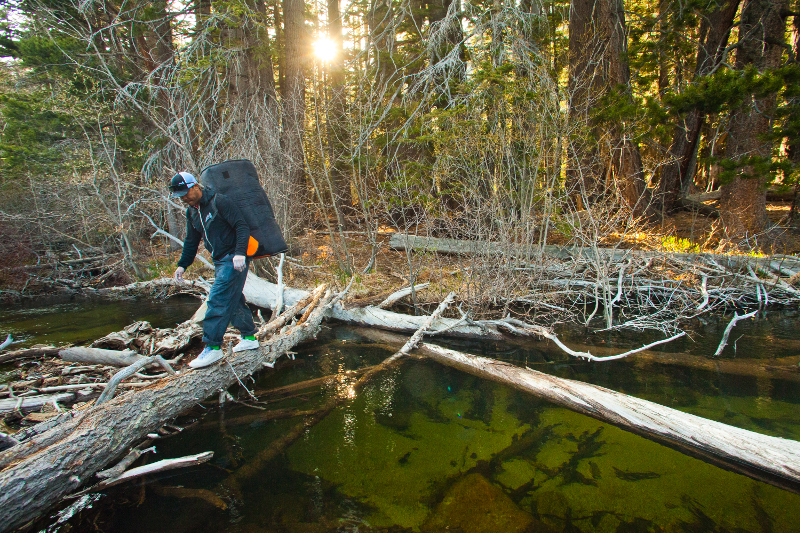
“We usually find just one or two boulders,” Perry said. “It’s super rare to find a large concentration of boulders in one area. So we came down out of that, and basically the next day we came back and started figuring out a way to access the boulders from the opposite direction—in reverse of the way we found it. We figured out a good way to come in from the Eagle Lake Trail and cross the river. Later in early spring, we found that it was totally impossible to cross; so we ended up finding a little fisherman’s trail that crosses the river higher up the trail.”
In a place like Lake Tahoe, [a new quality zone] can turn into a feeding frenzy for first ascents.
As Perry and Outcalt began establishing climbs at Lost in Space, word spread about the quality of the rock and the concentration of the bouldering at this new zone. In a place like Lake Tahoe, which has a large number of dedicated and motivated route developers, this can turn into a feeding frenzy for first ascents. In the weeks to come, other local climbers and route developers including Noah Kaufman, Joel Zerr, Tom Herbert, Dave Hatchett, Kyle O’Meara, Jesse Bonin, Jon Thompson, Roman Yalowitz, and others established problems at Lost in Space.
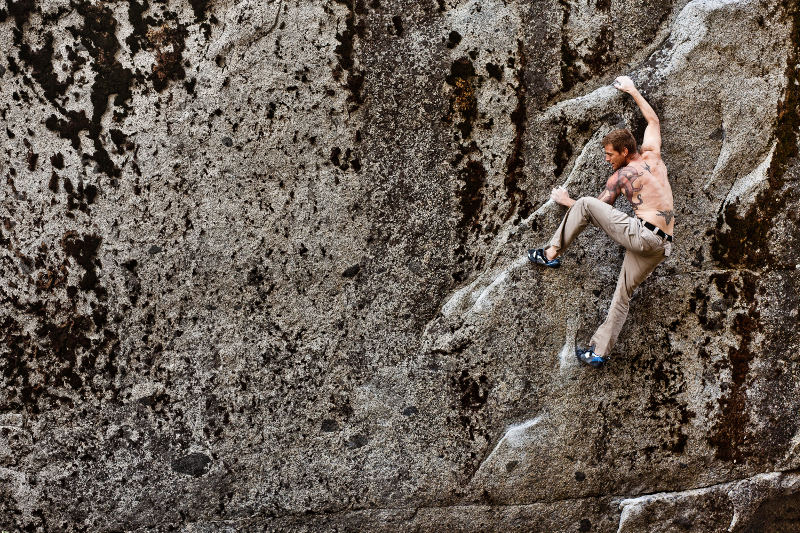
“A lot of people just descended on the place in its infancy,” said Perry. “The area was basically just thrown into the West Shore Guidebook. It was way too good, so it spread like wildfire. I actually wanted to keep it a little more hush for a while, but it was just too good and it blew up. So we did some of the warm-ups around the Space Cowboy boulder, then Noah Kaufman and Dave Hatchett did a ton of stuff. David Outcalt ended up doing The Gerbler. Everyone was just really excited, but in my opinion it was pretty rushed into the guidebook. Everything happened really fast; but that’s what happens when the cat’s out of the bag.”
“Of all the thousands of boulders I’ve found in the Tahoe area, Lost in Space is one of my only really good finds.”
“Of all the thousands of boulders I’ve found in the Tahoe area, Lost in Space is one of my only really good finds,” Perry continued. “That one zone definitely takes the cake. Even now I’ve never really found anything that good. I think really it’s unique for Tahoe because of the rock quality. When you go around other areas in Tahoe it can be really grainy and sometimes. This has a more talus field feeling and so it’s a lot cleaner.”
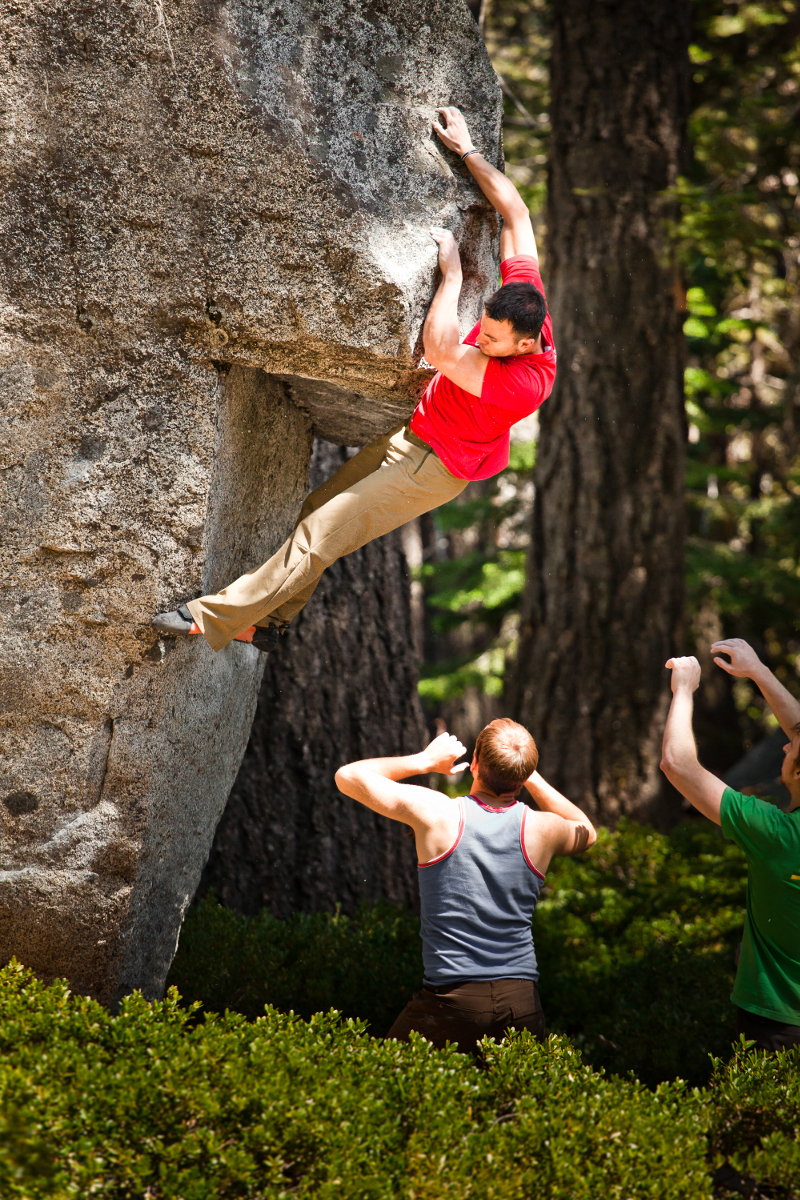
“A lot of the boulders fell down in the 1980s, so they are actually really fresh,” Perry explained. “There used to be routes on the cliff above where the talus came from. There’s really not much moss on any of the blocks, and so not much cleaning. Lost in Space is typical of Desolation Wilderness, but it’s not really typical of all Tahoe climbing.
In Tahoe, you have three basic types of rock: you have that really deteriorating and weathered rock along the lake, then you have all your major polished granite from the glacial erratic, but here and there you have places where big cliff faces have created large talus fields and so it’s fresher and less weathered.”
“This zone is still growing at a pretty rapid pace. It seems like almost all of the little projects are steadily getting ticked off, and new boulders are still being found.”
“It’s pretty interesting with Jimmy [Webb] coming in,” added Perry. “He’s opening up a lot of problems in the Tahoe area, including a lot of the boulders above the Lost in Space area. So this zone is still growing at a pretty rapid pace. It seems like almost all of the little projects are steadily getting ticked off, and new boulders are still being found. A lot of the older stuff around the lake is really user friendly, but a lot of the new stuff is in the talus, some of it 500ft above the basin.”
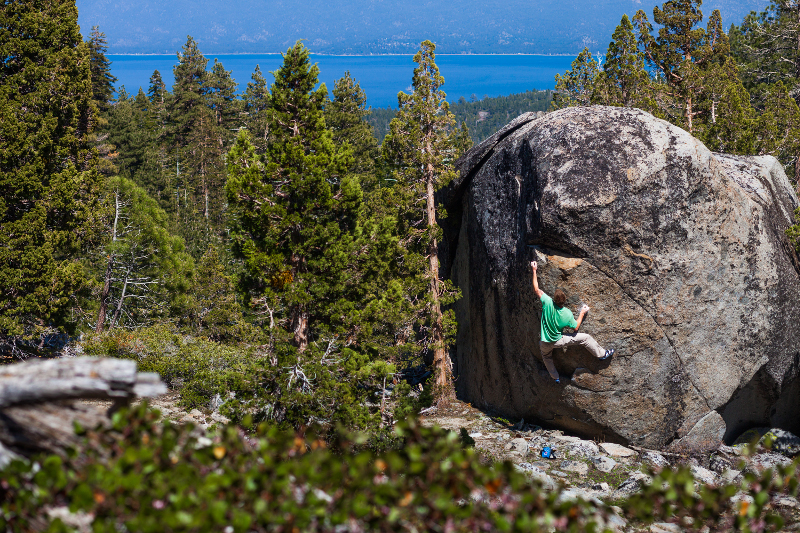
Special Concerns
With thousands of square miles of wetlands, shorelines, streams and fragile high elevation forests, the Tahoe Basin is a thriving and diverse ecosystem that is almost entirely protected by State Parks or Wilderness designation. The area is also heavily patrolled by Park or Wilderness Rangers.
While following the many rules and regulations that protect this region may seem daunting, the Lake Tahoe Basin sees so much tourism and traffic that the area is fairly well-designed for low-impact access. The parking area for Lost in Space is paved with well-marked parking spots and bathrooms are accessible at the trailhead. Beyond the main trailhead at Emerald Bay, please stay on existing trails and do not destroy or remove vegetation in this region.
